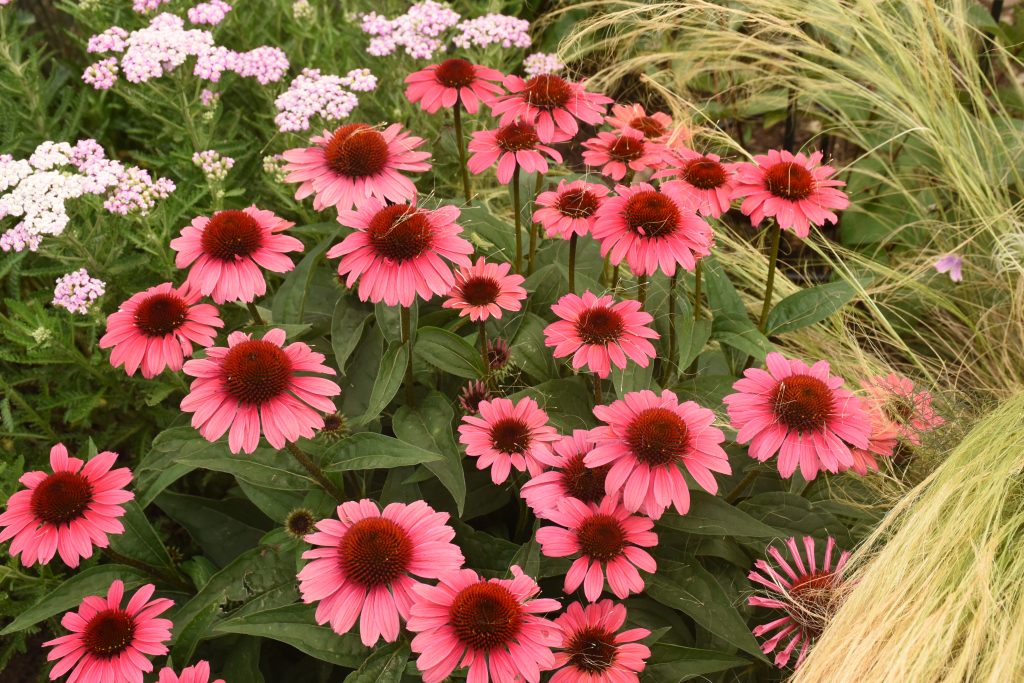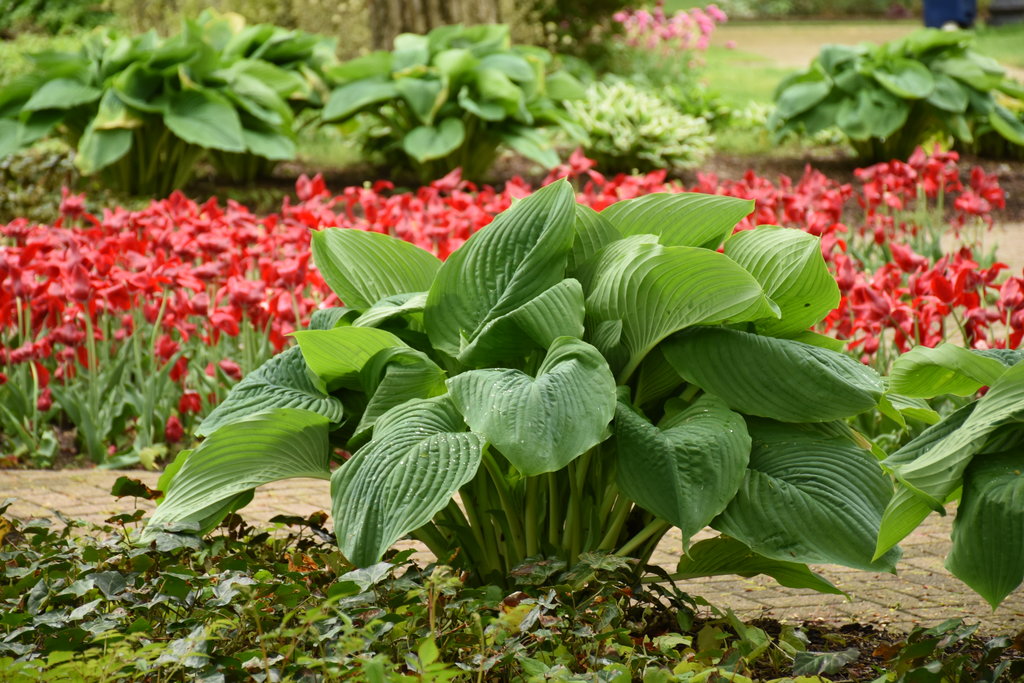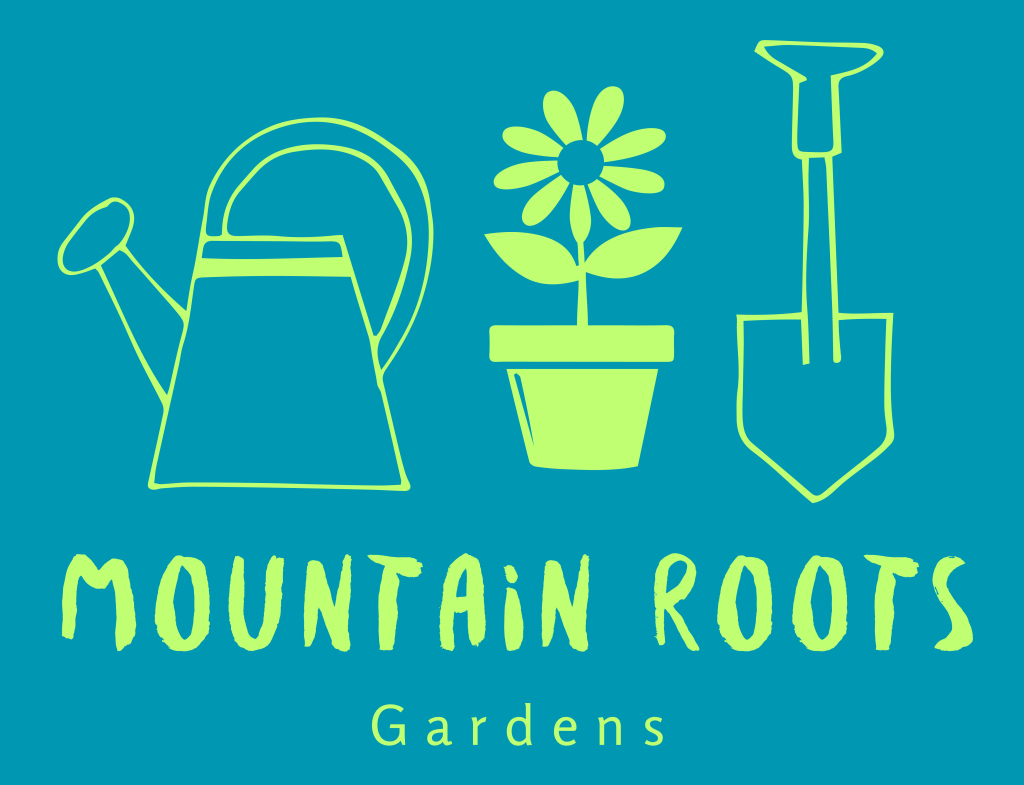We’ve got all of your perennial favorites!
Here at Mountain Roots Garden we offer a great selection of hardy perennial plants for your garden. Shop our garden center for everything under the sun (plus your shady spots too!). We feature many native plants, as well as plants to attract butterflies, pollinators and birds. We’ve got all your favorites – Hosta, Ornamental Grasses, Coneflower, Heuchera, Daylily, Iris, Peony and more! Need help with a special spot in the garden. Ask our staff. You’ll find it all at our Milliken, CO garden center.


Sun-Tolerant Perennials:
- Achillea (Yarrow): Fern-like foliage with flat-topped clusters of flowers in various colors. Drought-tolerant.
- Aconitum (Monkshood): Tall spikes of blue or purple hooded flowers. Prefers cooler climates.
- Agastache (Hyssop): Aromatic foliage with tubular flowers that attract pollinators. Various colors.
- Alcea (Hollyhock): Tall, stately stalks with large, colorful blooms. Classic cottage garden plant.
- Amsonia (Blue Star): Clusters of small, star-shaped blue flowers. Foliage turns golden in fall.
- Aquileia: Likely meant to be Aquilegia (Columbine): Delicate, nodding flowers in various colors. Attracts hummingbirds.
- Armeria (Sea Thrift): Compact, grassy foliage with round flower heads on tall stalks. Pink, white, or red flowers.
- Artemisia: Silver or gray-green aromatic foliage, used more for its foliage than flowers.
- Asclepias (Milkweed): Clusters of vibrant flowers; essential for monarch butterflies.
- Aster: Daisy-like flowers in shades of blue, purple, pink, and white. Fall blooming.
- Bamboo: Fast-growing with a wide range of species. Some are invasive.
- Baptisia (False Indigo): Tall spikes of pea-like flowers in blue, purple, yellow, or white.
- Bellis (English Daisy): Small, cheerful flowers in white, pink, or red. Often used as a bedding plant.
- Calamintha (Calamint): Small, delicate flowers on bushy plants. Attracts bees.
- Campanula (Bellflower): Bell-shaped flowers in blue, purple, or white. Various species with different growth habits.
- Cerastium (Snow-in-Summer): Silver foliage with small white flowers. Groundcover.
- Chelone (Turtlehead): Snapdragons-like flowers on upright stems. Prefers moist soil.
- Cimicifuga (Black Cohosh): Tall, dramatic spikes of white or pinkish flowers. Prefers some shade but included here for its ability to tolerate sun with moisture.
- Coreopsis (Tickseed): Bright, cheerful flowers, often yellow or gold. Long blooming.
- Crocosmia: Arching stems with tubular flowers in red, orange, or yellow. Attracts hummingbirds.
- Delosperma (Ice Plant): Succulent foliage with daisy-like flowers. Excellent groundcover for hot, dry areas.
- Delphinium: Tall spikes of blue, purple, pink, or white flowers. Requires staking in windy areas.
- Dianthus (Pinks): Small, fragrant flowers in shades of pink, red, or white. Some have a clove-like scent.
- Echinacea (Coneflower): Daisy-like flowers with a central cone. Various colors.
- Eryngium (Sea Holly): Thistle-like flowers in blue or silver. Textural foliage.
- Eupatorium (Joe-Pye Weed): Tall, with fluffy clusters of purple or pink flowers. Attracts butterflies.
- Gaillardia (Blanket Flower): Brightly colored, daisy-like flowers. Very drought-tolerant.
- Gaura: Delicate flowers on long, thin stems. Gives a whimsical, butterfly-like appearance.
- Gentiana: Vibrant blue flowers, often challenging to grow.
- Geranium: Various species, from groundcovers to upright plants. Flowers in shades of pink, blue, purple, or white.
- Geum: Bright, cheerful flowers above fuzzy foliage. Various colors.
- Helenium (Sneezeweed): Daisy-like flowers in warm colors. Late summer to fall blooming.
- Heliopsis (False Sunflower): Sunflower-like blooms. Tall and sturdy.
- Hemerocallis (Daylily): Trumpet-shaped flowers in various colors. Each flower lasts only one day.
- Hibiscus: Large, showy flowers in tropical hues. Some species are hardy.
- Iris: Diverse group with showy flowers. Prefers well-drained soil.
- Lavandula (Lavender): Aromatic foliage and spikes of purple flowers. Drought-tolerant.
- Leucanthemum (Shasta Daisy): Large, white daisy-like flowers with yellow centers.
- Liatris (Blazing Star): Tall spikes of purple or white flowers. Attracts butterflies.
- Lilium (Lily): Large, fragrant flowers on tall stems. Various colors and patterns.
- Lobelia: Some species have intense blue flowers. Prefers moist conditions.
- Lupinus (Lupine): Tall spikes of pea-like flowers in various colors. Nitrogen-fixing.
- Monarda (Bee Balm): Whorls of tubular flowers in red, pink, purple, or white. Attracts pollinators.
- Nepeta (Catmint): Lavender-blue flowers on bushy plants. Aromatic foliage.
- Oenothera (Evening Primrose): Cup-shaped flowers, often yellow. Blooms in the evening.
- Peony: Large, fragrant blooms in pink, red, white, or yellow. Spring blooming.
- Penstemon (Beardtongue): Tubular flowers in various colors. Attracts hummingbirds.
- Perovskia (Russian Sage): Tall spikes of lavender-blue flowers. Aromatic foliage.
- Phlox: Various species with clusters of flowers. Colors range widely.
- Platycodon (Balloon Flower): Balloon-shaped buds opening to star-shaped flowers. Blue, pink, or white.
- Polemonium (Jacob’s Ladder): Ladder-like foliage with clusters of bell-shaped flowers. Prefers cooler conditions.
- Potentilla (Cinquefoil): Small, shrubby plant with yellow, white, or pink flowers.
- Rudbeckia (Black-Eyed Susan): Bright yellow flowers with a dark center. Very hardy.
- Salvia: Spikes of flowers in blue, purple, red, or white. Attracts bees and butterflies.
- Scabiosa (Pincushion Flower): Delicate flowers on slender stems. Various colors.
- Sedum (Stonecrop): Succulent leaves with clusters of star-shaped flowers. Drought-tolerant.
- Sempervivum (Hens and Chicks): Rosettes of succulent leaves. Flowers are less significant.
- Stachys (Lamb’s Ear): Fuzzy, silvery foliage. Some species have tall spikes of pink or purple flowers.
- Stokesia (Stokes’ Aster): Large, aster-like flowers in blue, purple, or white.
- Thyme: Small, aromatic leaves with tiny flowers. Excellent groundcover.
- Veronica (Speedwell): Spikes of blue, purple, pink, or white flowers.
Shade-Tolerant Perennials:
- Ajuga (Bugleweed): Groundcover with spikes of blue, pink, or white flowers. Bronze or green foliage.
- Alchemilla (Lady’s Mantle): Scalloped leaves with tiny, yellow-green flowers.
- Anemone: Windflower. Delicate flowers in white, pink, or purple. Late summer to fall blooming.
- Asarum (Wild Ginger): Heart-shaped leaves with inconspicuous brown or purple flowers.
- Astilbe: Feathery plumes of flowers in shades of pink, red, white, and purple. Moisture-loving.
- Bergenia: Leathery leaves with pink or white flowers in early spring.
- Brunnera: Heart-shaped leaves, often variegated, with tiny blue flowers.
- Dicentra (Bleeding Heart): Iconic, heart-shaped flowers in pink or white. Spring blooming.
- Digitalis (Foxglove): Tall spikes of tubular flowers in pink, purple, white, or yellow. Prefers partial shade.
- Doronicum (Leopard’s Bane): Daisy-like yellow flowers in spring.
- Epimedium: Delicate flowers in spring. Heart-shaped leaves.
- Euphorbia: Some species have bright, chartreuse flowers in spring. Prefers partial shade.
- Ferns: Various species with diverse foliage. Prefers moist, shady conditions.
- Galium (Sweet Woodruff): Whorls of leaves with tiny white flowers. Groundcover.
- Geranium: Some species are shade-tolerant, offering colorful flowers or foliage.
- Helleborus (Lenten Rose): Early spring flowers in shades of green, pink, purple, and white.
- Heuchera (Coral Bells): Colorful foliage in shades of purple, bronze, and green. Delicate flowers.
- Heucherella: Hybrid of Heuchera and Tiarella, with attractive foliage and small flowers.
- Hosta: Varied foliage in size and color with spikes of white or lavender flowers.
- Iberis (Candytuft): Evergreen groundcover with clusters of white flowers in spring.
- Lamium (Dead Nettle): Variegated foliage with pink, purple, or white flowers. Groundcover.
- Ligularia: Large, bold leaves with spikes or clusters of yellow or orange flowers.
- Lysimachia (Loosestrife): Varieties include creeping groundcovers to tall plants. Yellow flowers.
- Myosotis (Forget-Me-Not): Tiny blue, pink, or white flowers. Self-seeds readily.
- Nipponanthemum (Nippon Daisy): Large, daisy-like white flowers in fall. Prefers full sun to part shade.
- Pachysandra: Evergreen groundcover with small white flowers. Dense shade lover.
- Polemonium (Jacob’s Ladder): Ladder-like foliage with bell-shaped flowers. Prefers cooler, shaded spots.
- Poppy: Some species prefer partial shade, with delicate, papery flowers.
- Pulmonaria (Lungwort): Spotted or silvered leaves with pink, blue, or purple flowers.
- Sagina (Irish Moss): Moss-like groundcover with tiny white flowers.
- Tiarella (Foam Flower): Lobed leaves with spikes of foamy white or pink flowers.
- Trollius (Globeflower): Globe-shaped, bright yellow or orange flowers. Moisture-loving.
- Vinca (Periwinkle): Evergreen groundcover with blue, purple, or white flowers.
- Viola: Small flowers in a wide range of colors. Pansies and violets are well-known types.
This overview offers a glimpse into the wide range of perennials available for various garden conditions, from full sun to full shade. Always consider your local climate and soil conditions when selecting plants for your garden.
